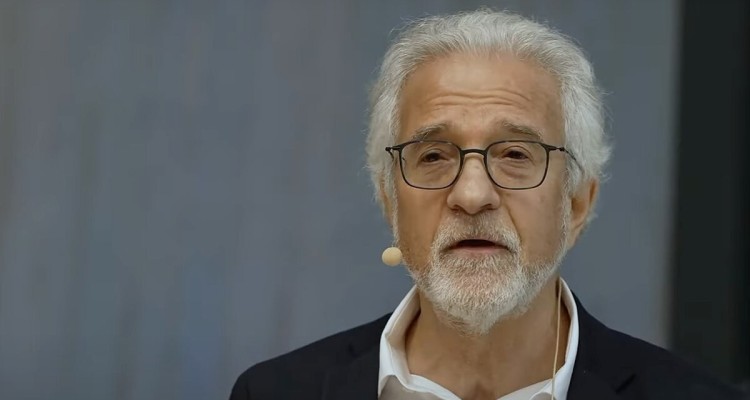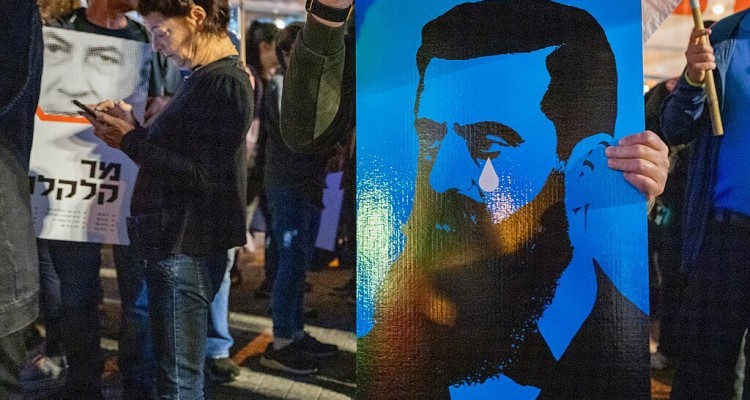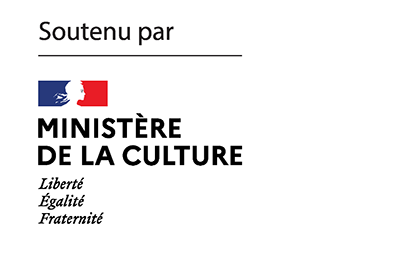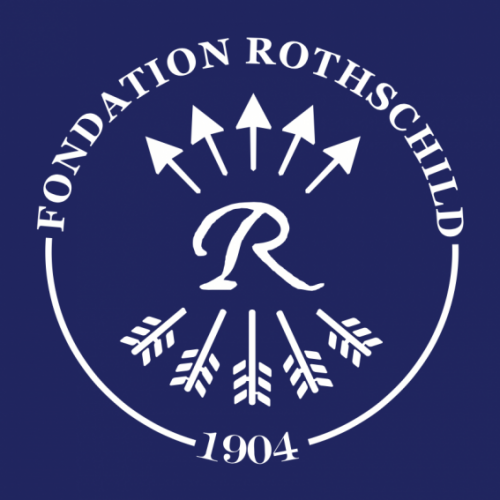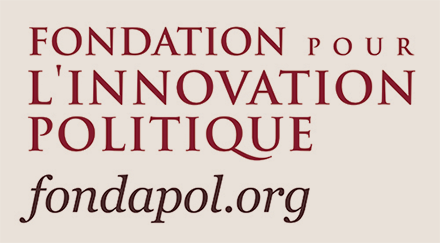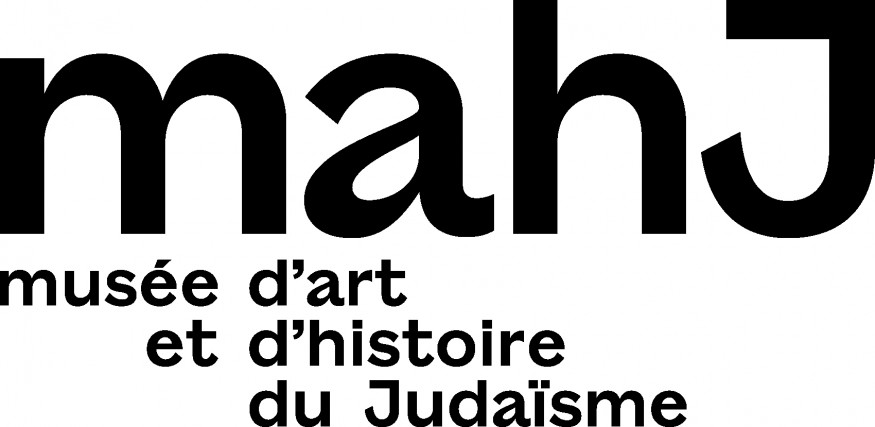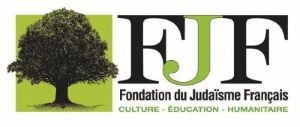Nicknamed the ‘Je Sais Tout’ brothers, Joseph, Salomon and Théodore Reinach represent both the academic excellence and the extreme assimilation of French Jews at the turn of the 20th century. The younger Salomon in particular, through his defense of a modernized liberal Franco-Judaism or his opposition to Zionism, embodied the most assimilated edge of French ‘Israelitism’ which has since been criticized by Hannah Arendt or Isaiah Berlin, notably for its supposed inability to apprehend and fight against anti-Semitism. By revisiting the life and work of Salomon Reinach, whose correspondence he recently edited[1], Boris Czerny shows that this is not the case and that the supposed political discretion of the Israelites in fact masks diverse and subtle forms of commitment and solidarity.
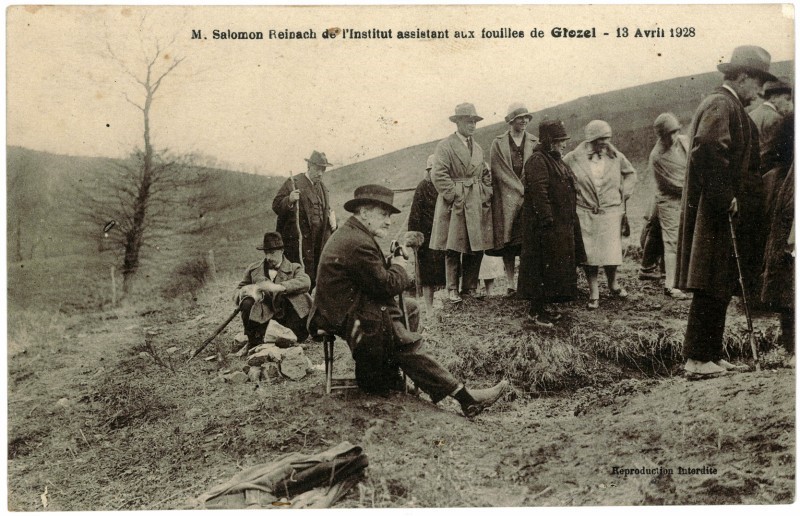
In the literature on French Jews in the nineteenth and twentieth centuries, Salomon Reinach is generally considered an exemplary representative of the French Jewish community of this period. The son of a German Jewish banker who emigrated to France in the 1840s, Salomon and his brothers, Joseph (1856-1921), a journalist and politician close to Léon Gambetta, and Théodore (1860-1928), a historian and archaeologist specializing in epigraphy, made the excellence of their academic career and their commitment to the universalist values of the Republic the proof of their will to integrate into French society. They aspired to embody all that was most brilliant and remarkable about French culture. But while seeking to treat their ethnoreligious background as incidental to their identity, they demonstrated their attachment to their community by fighting for the triumph of justice and against anti-Semitism. This deviation from the principle of republican neutrality, revealing the ambiguous position of French Jews, assumed multiple expressions that we will present through the case of Salomon Reinach.
A model Israelite
In 1875, S. Reinach passed the entrance exam to the École Normale Supérieure on Paris’ Rue d’Ulm and was awarded first place in the competitive exam for the agrégation in grammar in 1879. The same year, he passed the competitive examination for the French School of Athens and undertook an archaeological trip that sent him to Athens and Asia Minor. After a brief interlude in London and Paris, he was appointed, at the end of 1883, to the secretariat of the Archaeological Commission of Tunisia. The year 1885 brought to a close what Hervé Duchêne describes as the “African period” in the life of S. Reinach. In 1887, he became a member of the Central Committee of the Alliance Israélite Universelle, of which he was vice-president from 1892 to 1912. In 1894, he joined the board of the Jewish Colonization Association. This organization, founded by Baron Hirsch and co-managed by the Alliance, was intended to help Russian Jews who left their country settle in South America or Palestine. In addition to his active participation in the JCA, of which he was elected vice-president in 1929, he was on several occasions president of the French Society for Jewish Studies and the periodical it published, La Revue des études juives. The raison d’être of the Revue was the publication of articles on religion and, more particularly, on Jewish religion, approached as a science through philological and historical analyses in the broad sense of the word.
Through his academic career, Salomon Reinach was a model representative of the French Jewish academic elite of the late nineteenth century. These “fous de la République” (“devotees of the Republic”), as the historian Pierre Birnbaum calls them, had managed to rise to positions of power by virtue of meritocracy. The Dreyfus Affair seemed likely to challenge assimilation as the ultimate goal of the emancipation process. However, apart from a small group of intellectuals grouped behind Bernard Lazare who disassociated themselves from “Franco-Judaism” and moved toward Zionist positions, the leaders of the community, and especially the leaders of the Alliance Israélite, continued to proclaim their patriotic attachment to France and to defend the existence of a Jewish union to aid Dreyfus. This prudence explains the discretion with which the Committee for the Defense against anti-Semitism, founded in 1895 on the initiative of the Chief Rabbi of France at the time, Zadoc Kahn, and headed by Narcisse Leven, President of the Central Committee of the Alliance Israélite Universelle, worked. S. Reinach was one of its main leaders. Prudence is not inaction. The correspondence between L. Errera and S. Reinach reveals their intense involvement in the publication of articles denouncing the fallacious nature of the accusations against Dreyfus. When the case was reopened in 1898, S. Reinach published, under the pseudonym of the Archivist, a detailed study of the anti-Semitic texts published in the anti-Semitic newspaper La Libre Parole.
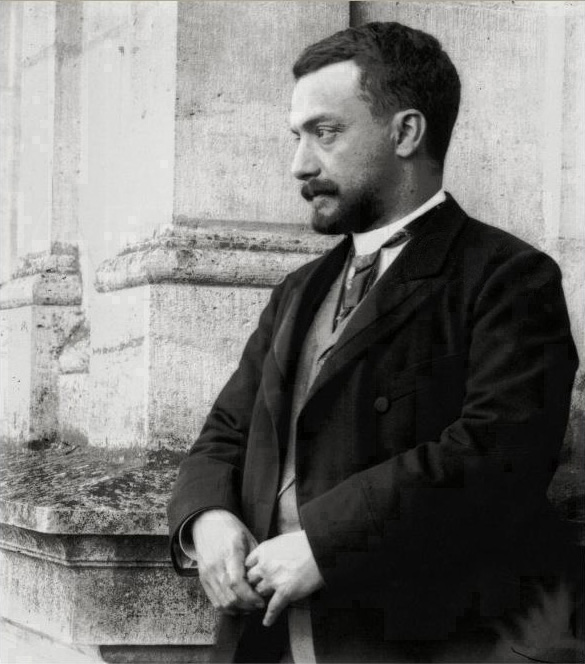
A world-renowned scholar
For the majority of French Israélites (French Jews of the prewar period), the outcome of the Dreyfus Affair was proof that the only way forward was that of reasoned and purposeful assimilation. And if further proof were needed of the confidence to be placed in French institutions, the election in 1896 of S. Reinach to the Académie des Inscriptions et Belles-Lettres was the concrete manifestation that a Jew could attain a prestigious position despite the poisonous context of the affair. His academic ascent was rapid. In 1886, he was assigned to the Musée des Antiquités nationales de Saint-Germain en Laye, and in 1893 he was named assistant curator, then director, a position he held for thirty years, until his death.
Throughout his career, S. Reinach published a considerable number of studies and works devoted to Antiquity, ancient Gaul, Greek archaeology, as well as to religious practices and traditions approached from an anthropological point of view. Two works in particular, a collection in five volumes entitled Cults, Myths and Religions, published from 1905 onwards, and Orpheus, a general history of religions (first published in 1909), presenting religions as a persistence of rituals of archaic origin common to primitive religious forms, provoked a wave of indignation among the Catholic clergy and the supporters of traditional Judaism. Reinach’s call for a reform of Judaism that would eliminate extraneous and archaic rites, as well as his anti-Zionist positions, were at the origin of the campaign against him launched by the German branch of the Alliance (the Deutschen Confererenz Gemeinschaft) during the 1911 elections for the election of the Alliance’s central committee. Despite his election victory, Reinach resigned in 1912 and, according to A. According to Aron Rodrigue, “the only thing left for him to do was to intervene as a scholar, as he had done for a long time at the beginning of his career.” In other words, by losing his representative power within the official organizations, S. Reinach would have lost his capacity for political action. This statement seems to us to be questionable. In our opinion, S. Reinach’s commitment can be interpreted not in terms of the distinction between the different fields of expression that were his, but in their sum.
A constant amid diversity: intellectual commitment.
The work of Salomon Reinach, who was in turn or simultaneously translator, philosopher, specialist in the ancient and medieval world, popularizer and grammarian, historian and anthropologist, is immense. It represents 471 entries in the catalog of the Bibliothèque Nationale de France, including 90 books and 7000 notices or articles published in over 200 periodicals. The intrinsic scientific value of this exceptional production was sometimes discussed and disputed, but it was most often admired for its depth and eclecticism.
This transcendence of disciplinary boundaries is evident in the examination of his relations with fellow Russian historians and public figures. Before his marriage in 1891 to Rose (Rivka) Morgouliev, who was born in Odessa and came to France to study medicine, Reinach must have been aware of the pitiful situation of Russian Jews within the Russian Empire. As the largest Jewish community in the world, they were obliged to reside within the limits of a vast territory (the Pale of Settlement) corresponding more or less to the present-day limits of Lithuania, Belarus and Ukraine, and were subject to discriminatory legislation limiting, for example, access to higher education institutions and certain professions. S. Reinach was not unaware of all this, but his marriage to Rose, who was close to Zionist circles and had maintained links with activists from Odessa, such as the bacteriologist Waldemar Haffkine, marked the beginning of a new direction in his work and his commitments.
In 1891 S. Reinach published the French translation of the first three volumes of a six-volume series entitled Antiquities of Southern Russia, written in Russian by the Russian historians and archaeologists Nikodim Kondakov (1844-1925) and Count Ivan Tosltoy (1858-1916). Reinach’s interest in Russia and Russian art was also reflected in the writing of numerous notes entitled “Chronique d’Orient” published in the Revue Archéologique. His chronicles were devoted to the works and discoveries of Russian archaeologists and historians with whom he also maintained an assiduous correspondence.
Among his colleagues, some became close friends. In particular, S. Reinach established close ties with Count Ivan Tolstoy. He was a numismatist and historian, a member of the Archaeological Commission and vice-president of the Academy of Fine Arts from 1893 to 1905, when he was invited to join the cabinet of Serge Witte (1849-1915) as Minister of Public Education, a position he held from October 1905 to April 1906. In each of his activities, Count Tolstoy demonstrated his opposition to anti-Jewish legislation through his speeches and actions, of which he informed S. Reinach in his letters of their reality. As the examination of the correspondence between the two men shows, some of the data were later communicated by the French historian to the Belgian botanist Leo Errera. An active Dreyfusard, a collaborator of the JCA, Errera took up the cause of the defense of the Jews of Russia and wrote a book, Les Juifs russes, extermination ou émancipation (1893), the fruit of a salient exchange of information between S. Reinach and I. Tolstoy.
Another example of Reinach’s role as a go-between or information about the situation of Russian Jews to the West is given by his participation in the distribution of the book Anti-Sémitismes in Russia. Facts and Thoughts, written jointly in 1907 by Count Tolstoy and the Jewish historian Iouli Gessen (sometimes spelled Hessen, 1879-1939). This work, written by a Christian and a Jew, circulated little in Russia. In the West, especially in France and England, Waldemar Haffkine, Rose and Salomon Reinach tried in vain to have the book published in several translations. But despite this failure, the very fact that S. Reinach collaborated in the distribution of this work is proof of his investment.
After the Bolshevik Revolution of 1917 and the First World War, S. Reinach continued his militant action in favor of the Jews of Russia, accused of being the main agents of Judeo-Bolshevism. As a reaction to the dissemination of anti-Semitic clichés in the abundant literary production, he wrote a large number of articles and reviews. As can be seen from his correspondence with the journalist and leader of the British Jewish community, Lucien Wolff, he contributed to the denunciation of the fallacious nature of the Protocol of the Elders of Zion, which the Times newspaper affirmed in 1920 to be an authentic document. At the same time, S. Reinach also wrote the prefaces to two books, Lettre ouverte aux Cents-Noirs de Russie by I. Isaïevitch and Les Juifs et la Révolution russe by Boris Mirkine. Close to the milieu of immigrant Russian Jewish jurists, Boris Mirkine, Iouda Tchernoff and Boris Nolde, he personally worked for the creation of an army of peace intended to interpose itself between belligerent states.

This hitherto underestimated or ignored activist commitment was not only expressed in his writings on current events. Indeed, the whole of S. Reinach’s work reveals its coherence in the consideration of a back-and-forth movement between the past and the present, a movement that runs through most of his writings. Following the nuances of this play of mirrors allows us to grasp the protean nature of his activism, which was certainly expressed in a direct way, through words or actions, but also in a more “hidden” way in his historical works, even if, more often than not, these two planes are superimposed on each other and very often merge.
A panchronic conception of history
Through his commitment as a historian and public man in touch with his time, S. Reinach was not an exception. This double anchorage in contemporary life and the past was part of a profound movement of admiration and interest in Greek antiquity as a political and aesthetic model that had taken shape at the beginning of the nineteenth century in Europe as well as in Russia and continued until the beginning of the nineteenth century. For historians of the Belle Époque in France and the Silver Age in Russia, as well as for philologists and artists, the Hellenic reference was much more than a fashion, it was a quest for the absolute. In Paris, from Marcel Proust to Claude Debussy and Henry Matisse, many painters and writers established fruitful links with the greatest Hellenists, especially with Theodore and Salomon Reinach. In St. Petersburg, the poet Vyacheslav Ivanov gathered in his salon the finest of the arts and culture as well as historians and archaeologists who, once the enthusiasm for Greek Antiquity was over, began a journey back to the infancy of the different societies. This movement towards the origins placed historians at the center of a process of structuring the past specific to each nation. As Pierre Nora explains, “the nineteenth century was probably the blessed but distant era when the search for a society’s identity was based on national feeling, and therefore on the search for its origins, and therefore on history and the historian.”
This quest for ancestry helped to establish history in a pan-chronic relationship stimulating an interpretation of the present through the lens of the past. This approach, adopted and developed in Russia by Nikodim Kondakov and his pupil Mikhail Rostovtzeff, among others, favored the emergence of a distinct and specific Russian national story, and a country whose contemporary problems were illuminated in the light of the past. Thus, the issues studied by Rostovtzeff, namely the agrarian history of ancient Rome, the planned economy in the Hellenistic world, and the urban life of the middle classes, were directly connected with problems that arose in Russia at the end of the nineteenth century.
Going back to the sources of Jewish history could have led S. Reinach to Zionism at the time, but he considered it to be opposed to and contrary to the universalist spirit of Judaism and to his status as an Israélite (French Jew). History nevertheless offered him the possibility of denouncing the permanence of anti-Semitism by establishing identity relations between the present and the past. This bias toward a pan-chronic approach to history is, for example, formulated in the introduction to the study devoted to the accusation of ritual murder, a study written in 1893 and constituting the conceptual framework of historical analysis according to S. Reinach Reinach: “Of all the accusations which fanaticism and ignorance have used as a weapon against Judaism, there is none which can be compared, in implausibility and ineptitude, to that of ritual murder. And yet, such is the tenacity of certain errors, the blind injustice of certain passions, that this calumny, which has been confounded a thousand times, still finds propagators in Europe and creates victims almost before our eyes.” A few years before the beginning of the Beilis trial, named after this Ukrainian Jew, accused of having committed a ritual crime in 1911, Reinach’s words had a premonitory tone.
This process of adapting history to the present runs through other works, such as, for example, the study of the trial of Gilles de Rais who was, according to S. Reinach, accused of the murder of several Jews. This process of adapting history to the present runs through other works, such as the study of the trial of Gilles de Rais who was, according to S. Reinach, accused of the murder of several hundred children on the basis of “insufficient evidence” and “a singular concordance of incriminating testimony.” If there is mention of Gilles de Ray, Joan of Arc’s comrade-in-arms, it is indeed the name of Dreyfus that is suggested here, as, moreover, in the translation of the History of the Inquisition (1900-1903) by the historian Charles Léa, which a Belgian critic reproached Reinach for having excessively transformed for partisan purposes:
“This translation of the unjust and passionate book by the American historian was undertaken, as the translator himself agrees, with concerns that are very foreign to science, to flesh out the case of Dreyfus’s lawyer…. When will we be given, on the history of the Inquisition, the impartial book that Léa believes he wrote.”
Criticized for their excessive docility toward the French state and their lack of reactivity to anti-Semitism, French Jews in the second half of the nineteenth century and the first third of the twentieth, often took positions that distinguished them from the rest of the French population and made them a community. In this respect, the case of S. Reinach is revealing of the operational diversity of the commitment of French Jewish intellectuals, refusing, in the words of the sociologist Émile Durkheim, “to have to give assent to a judgment whose legality seemed suspect.” The Dreyfus affair is in question here, but the judgment remains valid for the other causes for which S. Reinach was involved as a historian. Reinach as a historian and leader of the Alliance and the Jewish Colonization Association. His ability to bring together these multiple fields of activity and to transcend historical boundaries is certainly one of the most salient features of his academic and public life. By his ability to see in the past interpretive models of the present and to establish bridges between eras, S. Reinach was undoubtedly an intellectual of his time.
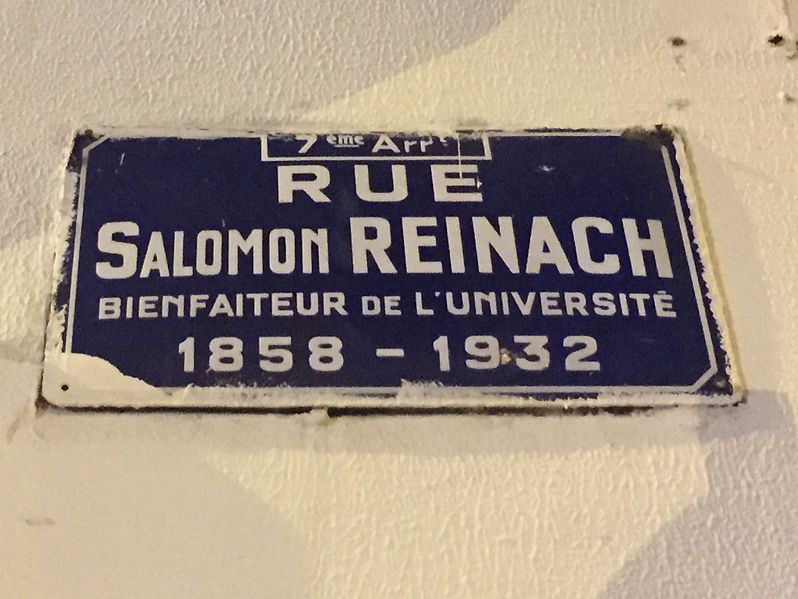
Could his mode of engagement be transposed today? To ask the question of the topicality of the figure of the Israélite intellectual is to leave the reassuring shores of historical analysis to engage in speculation. It is however possible to suppose that his action against anti-Semitism would still be relevant. On the other hand, it would no longer be possible for him to envisage the transfer and settlement of entire Jewish communities in foreign countries, as was the case with Russian Jews in Argentina or Brazil, without conceiving of their settlement in Israel, which did not exist as a Jewish state at that time. It is therefore probable that he should have clarified his relations with Israel in order to give credibility to his commitment as a Jew and an intellectual.
Boris Czerny
Notes
| 1 | Salomon Reinach, Correspondance 1888-1932. Un polygraphe sous le signe d’Amalthée, édité par Boris Czerny, Honoré Champion, Paris, 2020. |

